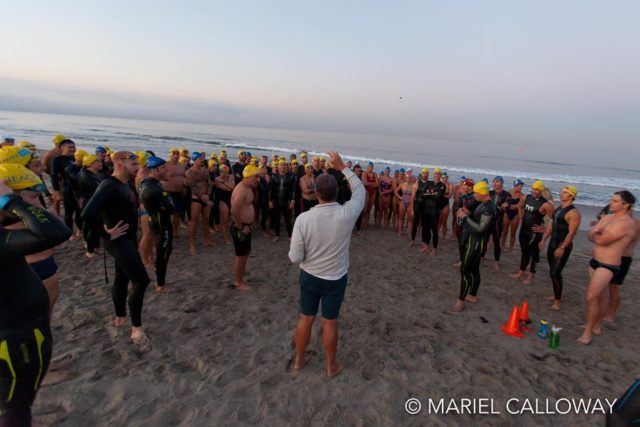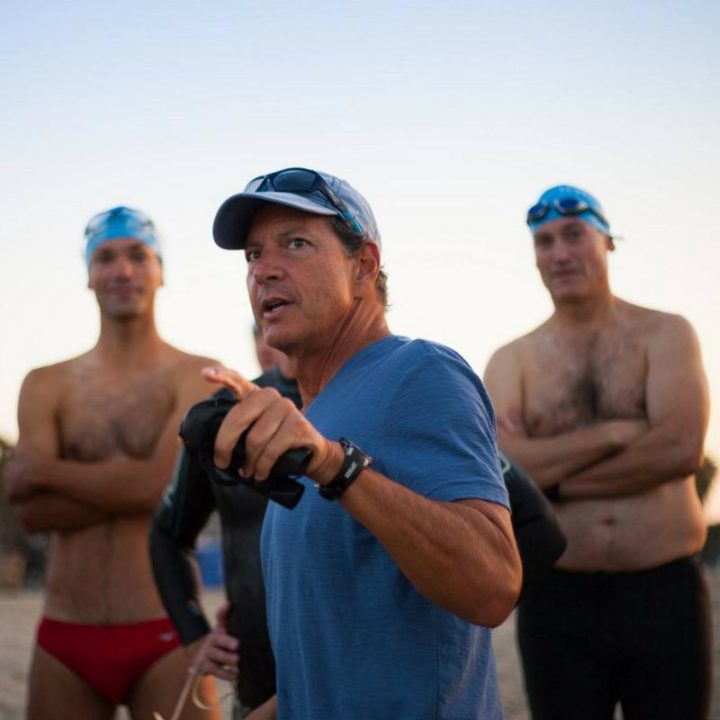How do you make a breakthrough in the water? For many triathletes the answer to this question is an elusive one. For over 30 years Gerry Rodrigues has dedicated himself to helping triathletes not only answer that question, but achieve those breakthroughs.
In a quest to find new coaching ideas I stumbled onto Rodrigues and his podcast. After hearing one episode his insights peaked my curiosity.
Eight months after listening to his Tower 26 podcast for the first time I had the opportunity to spend a morning with him on the pool deck.
My first question, “How does a triathlete make a breakthrough in the water?”
“Most triathletes that I come into to contact with tend to have a few common issues,” says Rodrigues. “Most need more training volume, some amount of enhanced technical improvement and the right methodology of preparation in the pool and open water.”
“Those things are the main drivers that help at every level, from a beginner to pros.”
Training Volume
Training volume has a profound effect on both an athlete’s endurance and technical efficiency. With a lack of the right swimming volume the specific fitness required to have success in the water is hard to achieve.
This is something Rodrigues has seen many triathletes struggle with, “There is general fatigue from the distance,” explains Rodrigues. “When they get to their bike they are tired, they are undertrained.”
The balance between technical work and training is crucial, but is frequently do not achieve, “Many people swim one hour a week, which could be plenty of time in the water, but they don’t do very much volume in that hour. Many are doing stroke drills all the time and they become good drillers, but they don’t swim fast.”
“We don’t have the time budget to do a million drills. By spending a bunch of time doing drills there is no way we are optimizing our performance opportunity.”
Drills are only one way to focus on technique. To improve performance the development of body awareness in the water while swimming is extremely important, “On land we have body awareness. We walk all day, we sit and stand, we are aware of the environment, we recognize gravity and learn to have postural integrity.”
Everything changes once you enter the water and learning how to work with buoyancy takes time, “The water holds you. It displaces most of your body weight so you don’t have to hold your body correctly any longer, the water takes care of that.”

When you train and compete in a foreign environment the right type of volume is not only needed for appropriate fitness, but also to understand how to move efficiently and effectively.
Training Prescription
Doing an appropriate amount of volume does not mean you are doing it correctly. It is common for triathletes to approach training in the water the same way they do the bike and the run, but swimming is a different animal, “If you and I wanted to enter a 10 km, if we just started running we would get better in three months,” says Rodrigues. “It doesn’t quite work out that way in swimming.”
“Most triathletes apply the same thinking to training for that 10 km as they do the swim segment. They go to the local pool and swim 20 or 30 or 40 minutes and build it up swimming continuously. They do that twice a week then show up at their triathlon and realize they weren’t any better compared to the last time they swum twice a week for 40 minutes.”
The structure of your practice determines if you are getting the biggest bang for your buck in the water, “Take a bucket of 40 minutes and structure something that will give them a higher return than what they are currently doing with continuous swimming.”
“Let’s get you out of something that has been habitual, training by yourself and doing your own thing, which is continuous swimming. Once I get you in a structured format I know you will be doing something different, it will be broken up and swimming at different speeds.”
“We know you will be doing something different so you will be getting a different stimulus. That in itself will create some form of enhancement.”
As a triathlete you train for three different disciplines so time management is critical for success. To get the most out of your time in the water different types of stimulus need to be built into a systematic program for intentional improvement to occur.
Technical Enhancement
The majority of technical errors Rodrigues sees with the athletes he works with at Tower 26 fit into three buckets; tautness, alignment and propulsion.
The foundation of being able to swim efficiently is having structural integrity in the water, “If you look at the average lap swimming population there is no structural integrity to their swim stroke. It is very loose and soggy. Structural integrity, the firmness that we hold our torso and our legs in the water lends itself to performance.”
“The softer we hold our bodies the slower we are going to go. The firmer we hold it the faster we are going to go – black and white.”
Proper alignment is about moving yourself forward with as little wasted energy as possible, “This is the bucket with the most errors. If you took all the errors in triathlon swimming and map them out using my three buckets 70% of them fall into this bucket right here.”
“The cause of that misalignment can come from over rotation or lingering when breathing or the head moving off the spine line. You always have to come back to finding the cause and the main causes are fairly common.”
Finally you need to create the force to move yourself forward, “The biggest error that I have found in propulsion is what I call petting the kitty.”
“The tension of the hand in the water is too soft. There is not enough tension or firmness in holding onto the water. There is not enough firmness to it to be able to generate propulsion because it is too sweet, it is too nice, it is too gentle. It is too much like you are petting a cat versus petting a great dane.”
…
Improving your swimming performance is not easy, but by focusing on the elements Rodrigues outlines can help you find the answers that have been eluding you.

I thought “petting the kitty” was a *completely* different kind of party. Would certainly explain slow swimming, though.